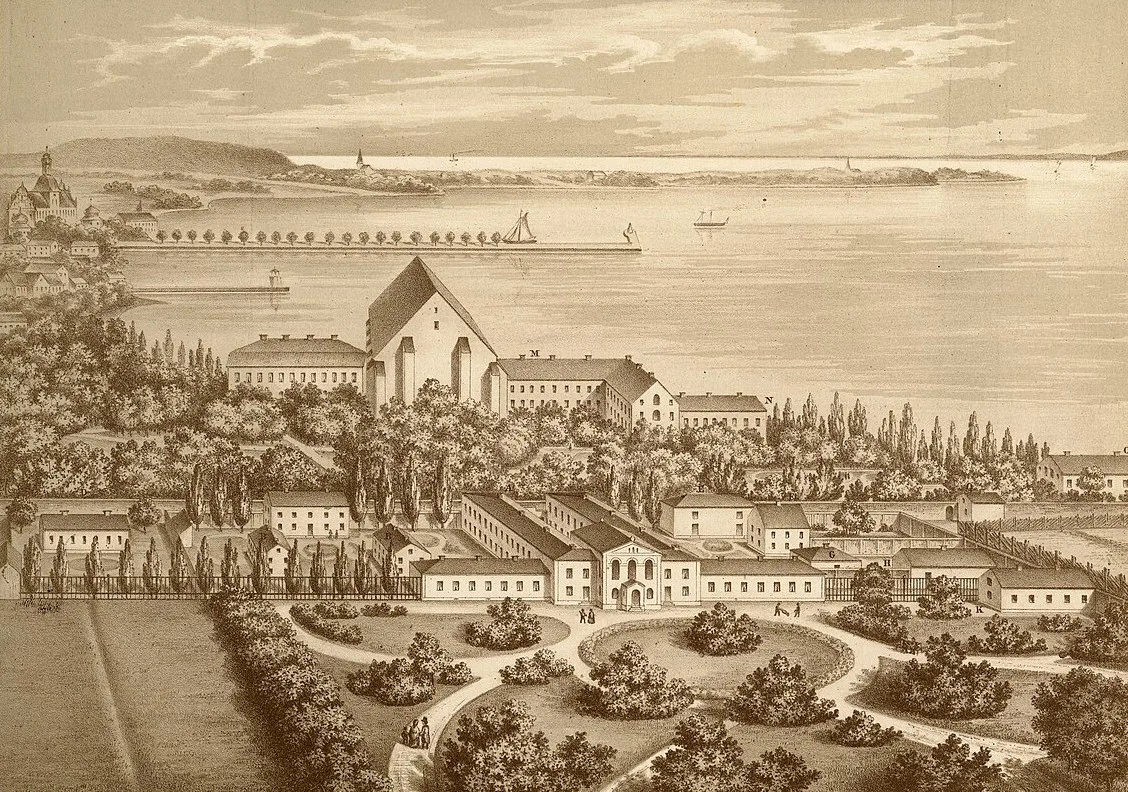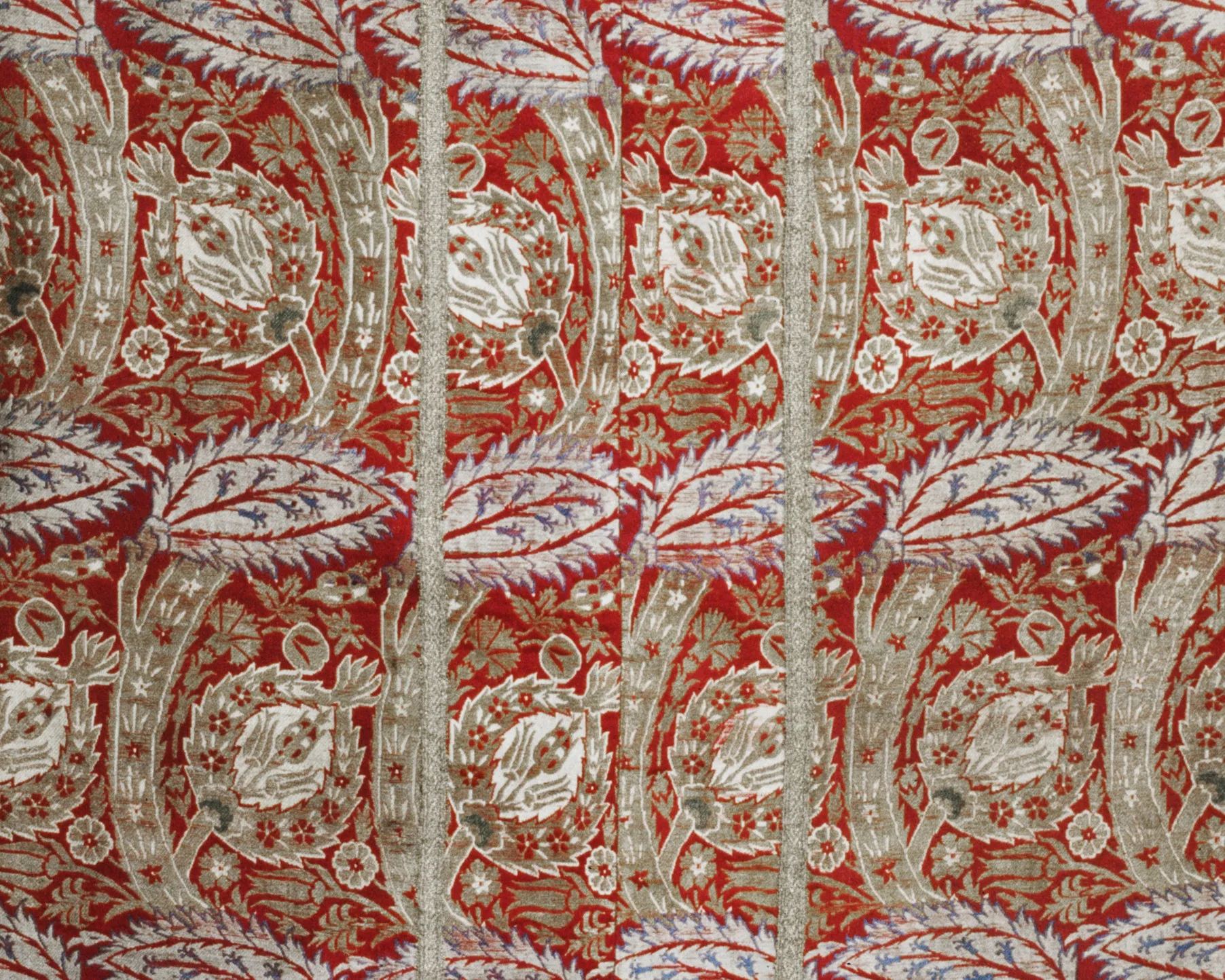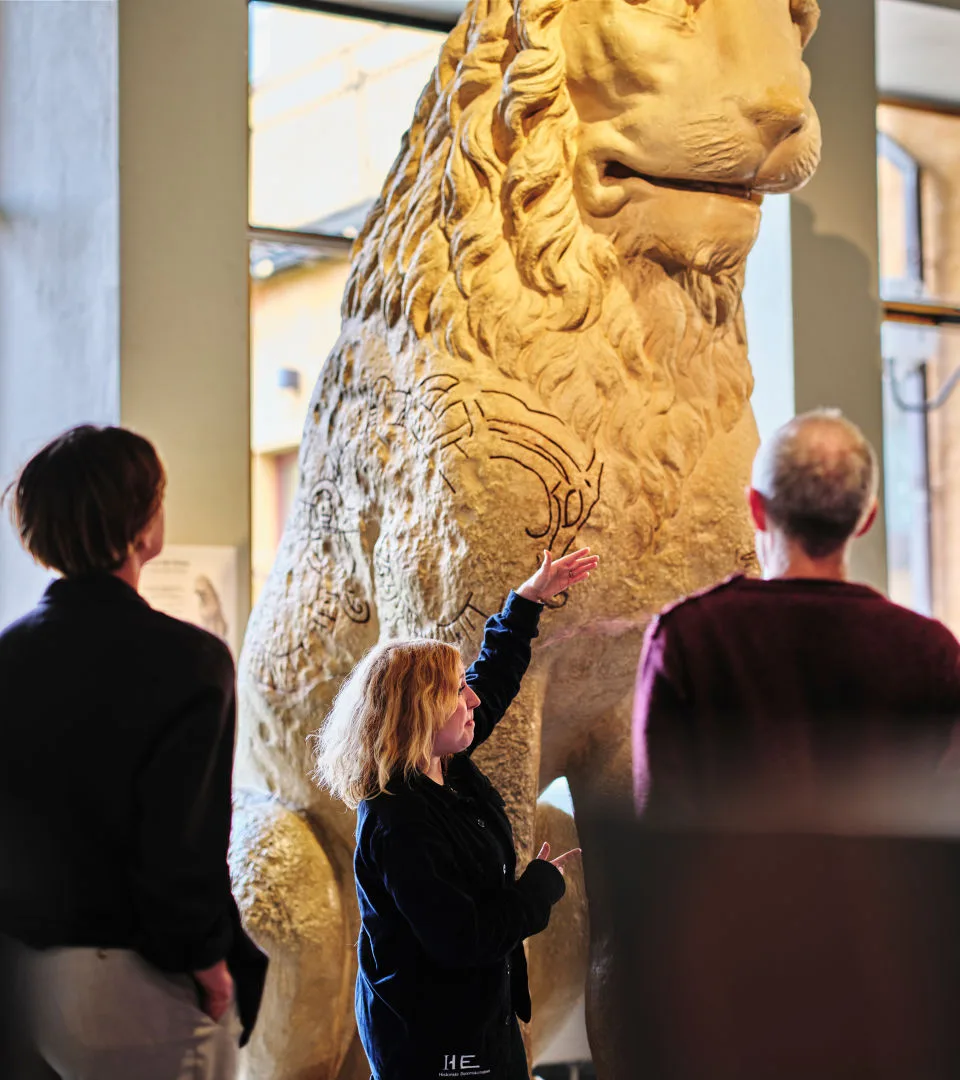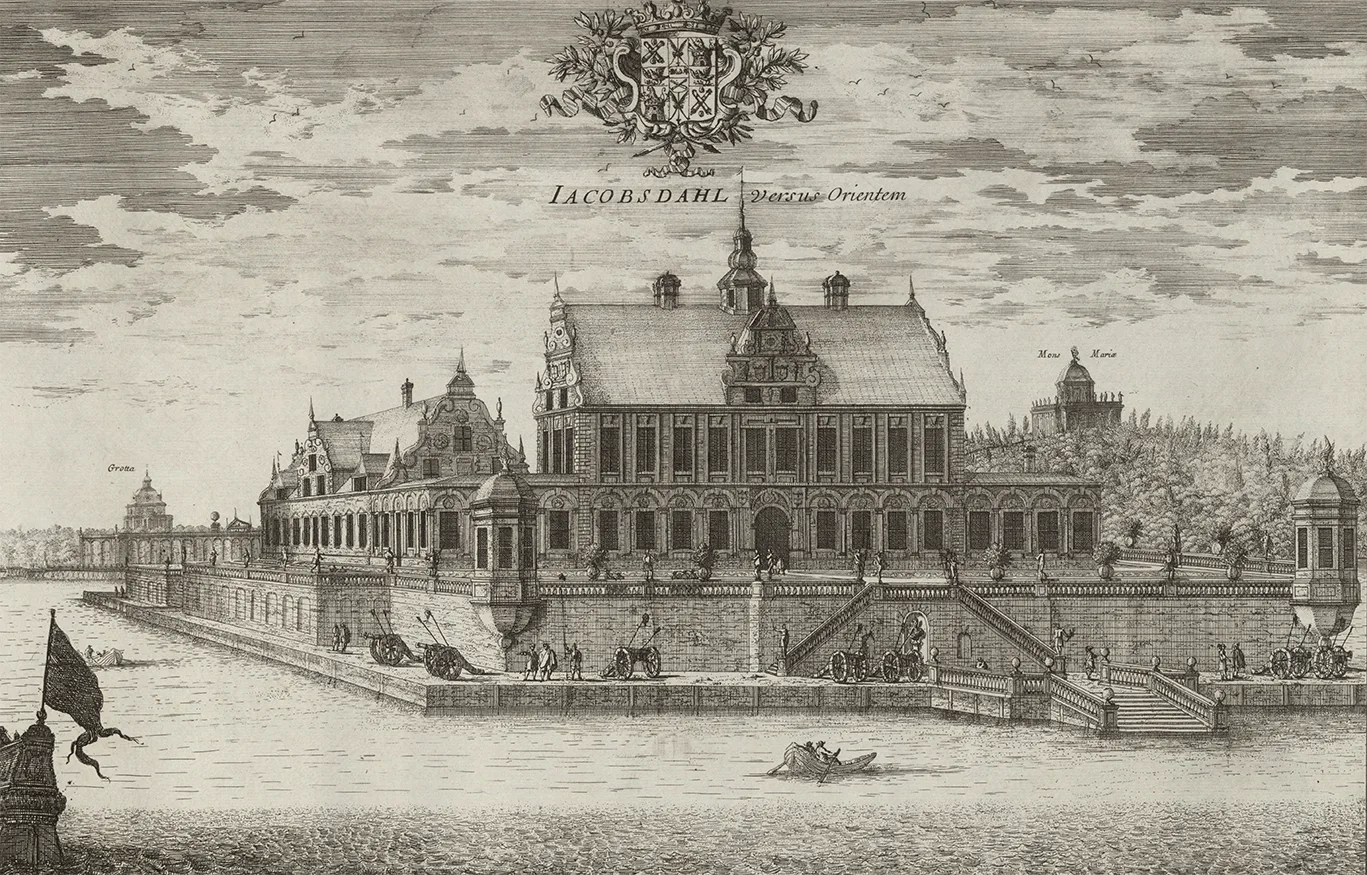Medieval saint: Thomas
Viking Age
AD 800 – AD 1100
Middle Ages
AD 1050 – AD 1520
Modern Age
AD 1520 – AD 2025
The life of the apostle Thomas
Very little is recorded about Thomas’s early life. In the Gospel of John, it is written that when Christ rose from the dead, he appeared to his disciples. When they told Thomas, who had not been present, Thomas said: “Unless I see the nail marks in his hands and put my finger where the nails were, and put my hand into his side I will not believe.” This is why the apostle Thomas is often referred to as “Doubting Thomas”.
Eight days later, when the risen Jesus once again appeared to the disciples, he said to Thomas: “Put your finger here; see my hands. Reach out your hand and put it into my side. Stop doubting and believe.”
How did Thomas become a saint?
There are various accounts of Thomas’s death. Some say he died of natural causes, others that he was martyred. According to legend, Thomas travelled to India, where he was commissioned to build a palace for the king. He converted and baptised the king’s wife to Christianity, which enraged the king so much that he ordered his soldiers to seize Thomas and pierce him with their spears. For this reason, he is sometimes depicted holding a spear.
How is Thomas depicted?
In addition to the spear, which symbolises his martyrdom, Thomas is sometimes shown holding a book, a common attribute of apostles in Christian art. He may also be depicted with a set square, referencing his association with building and construction.
In medieval art, Thomas is often portrayed in a contemplative pose, with a spear or a set square as his identifying attribute. One example is an embroidered piece in the collections of the Swedish History Museum, originally from Grödinge Church in Södermanland. In this embroidery, Thomas holds a set square. The piece originates from Flanders or present-day Netherlands and dates to the 16th century.
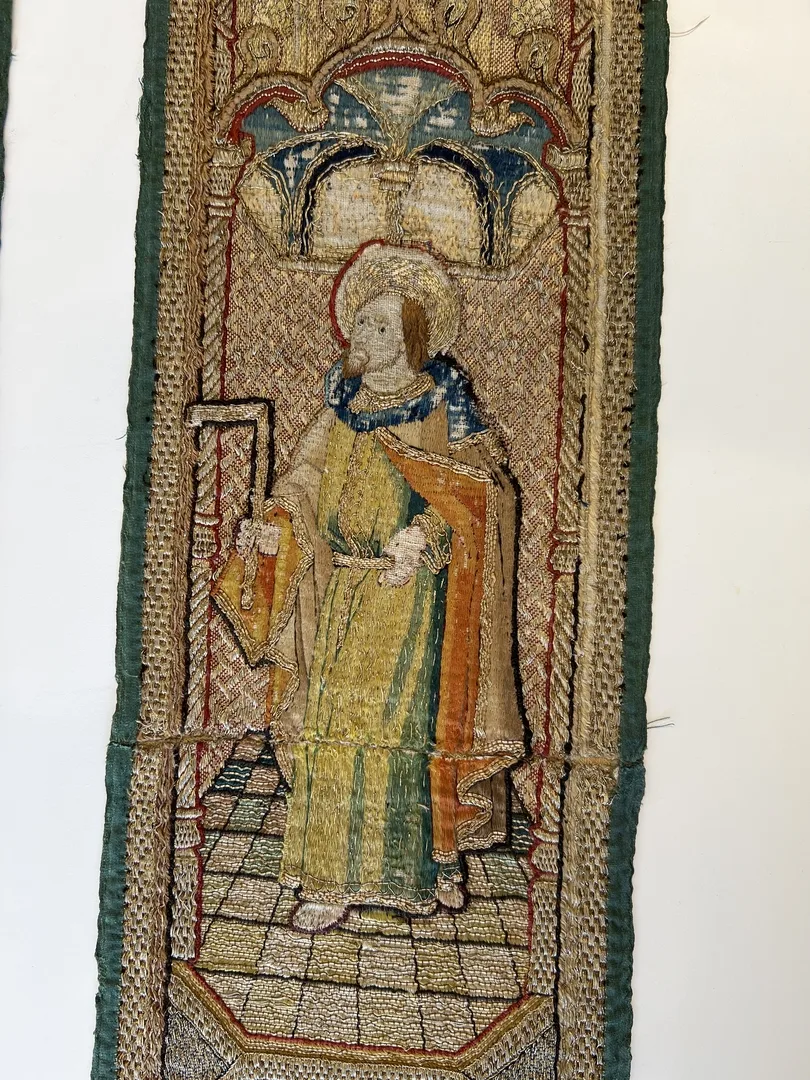
Embroidery depicting Thomas
On an altarpiece from Odensala Church in Uppland, dated 1514, Thomas is shown with a spear. Unusually, his name is inscribed beneath the image, something rarely seen on altarpieces.
A very different portrayal of the saint can be found in a late medieval sculpture from Skepptuna Church in Uppland, also held by the Swedish History Museum. In this sculpture, Thomas is seated as a powerful churchman.
Thomas’s feast day is celebrated on 21 December.
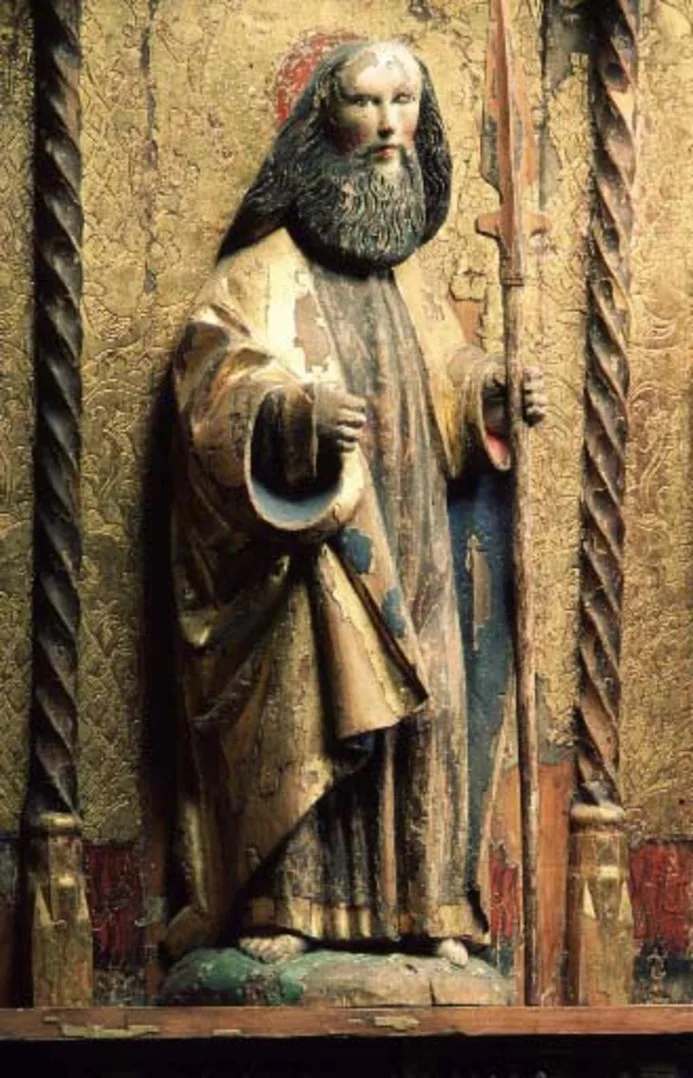
Altar sculpture of Thomas
On view at Historiska museet in the exhibition Medeltida konst
Another famous medieval Thomas: Thomas Becket
One of the most renowned Thomases of the medieval period is Thomas Becket. Born in London around 1118, he studied at the universities of Oxford, Paris, and Bologna. In 1155, King Henry II of England appointed him Chancellor, and his career progressed further when he became Archbishop of Canterbury in 1162. However, he soon came into conflict with the king and was forced into exile in 1164. Though they were eventually reconciled, Becket returned to England in 1170.
But the conflict remained unresolved, and four English knights interpreted the king’s words as a command to eliminate the archbishop. They travelled to Canterbury, where they murdered him in a side chapel of the cathedral. Thomas thus became a contemporary martyr and was quickly venerated as a saint throughout Europe, canonised as early as 1173.
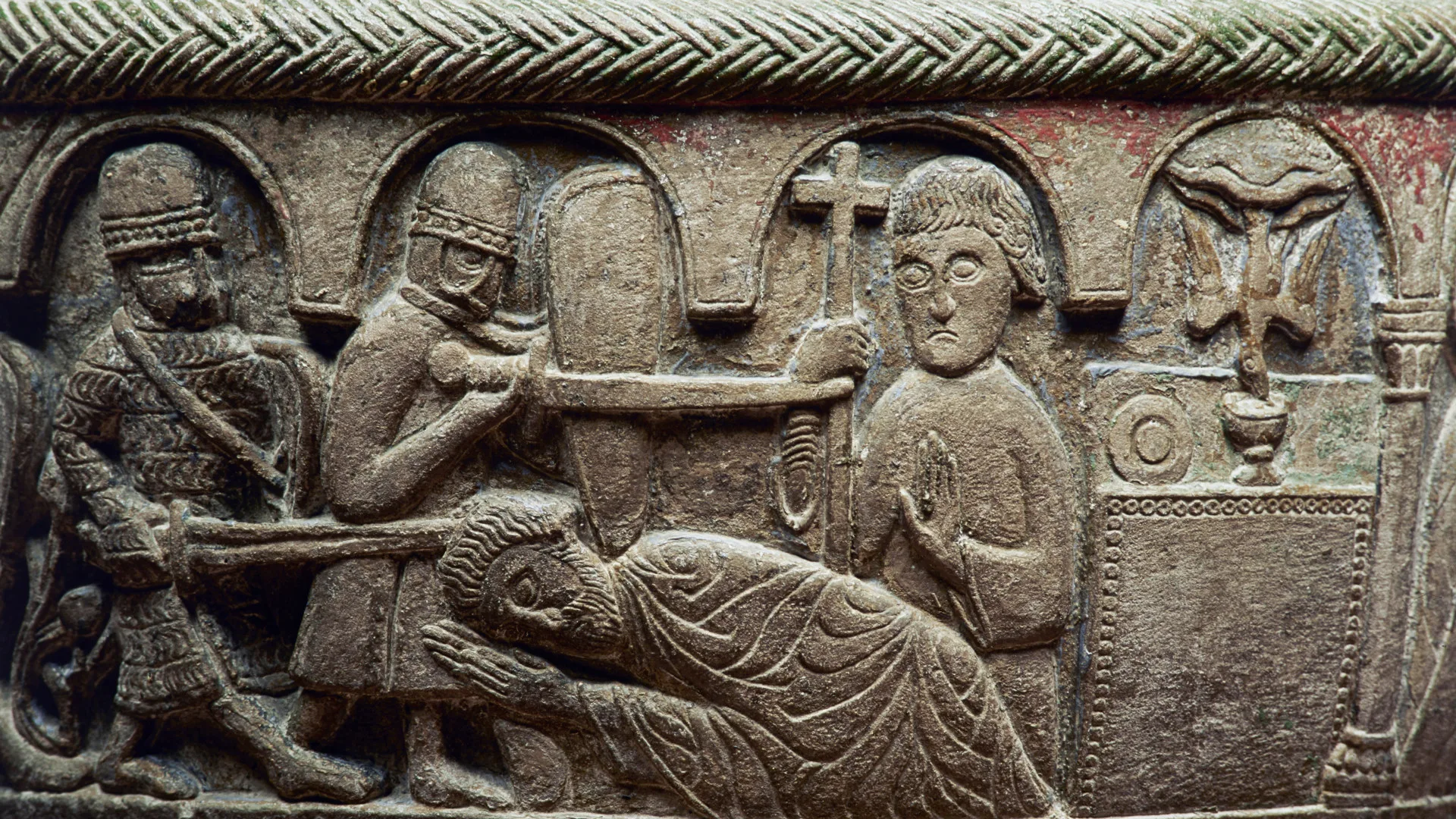
The murder of Thomas Becket
The earliest known depiction of the murder outside England is found on a baptismal font in Lyngsjö, Skåne. It was carved by the stonemason Tove in the early 13th century. At the time, the event was still fresh in public memory.
On the font, King Henry is seated on his throne, identified by the inscription HENRICUS REX. He gestures emphatically, while a knight in armour, holding sword and shield, listens intently as the king says: “Will no one rid me of this turbulent priest?” To the right, three knights with drawn swords are already inside the cathedral. The archbishop is falling, and behind him, near the altar with chalice, paten, and the dove of the Holy Spirit, a priest holds his primatial cross. Canterbury Cathedral, where Thomas’s remains were kept as relics, became a major pilgrimage site.

Sculpture of Thomas Becket
On view at Historiska museet in the exhibition Medeltida konst
A very different image of Saint Thomas Becket is found in a late medieval sculpture from Skepptuna Church in Uppland, now in the Swedish History Museum’s collections. In this sculpture, he is depicted as a powerful church dignitary.
